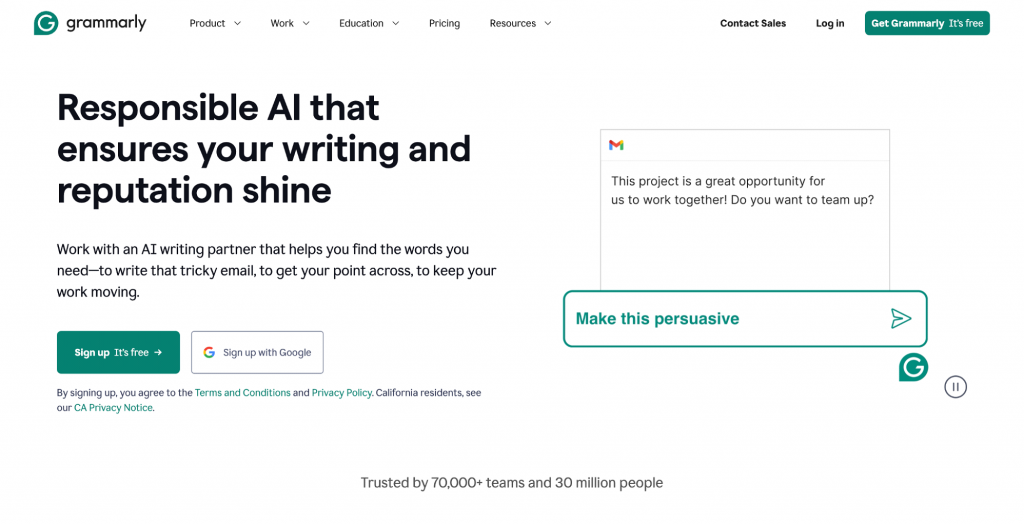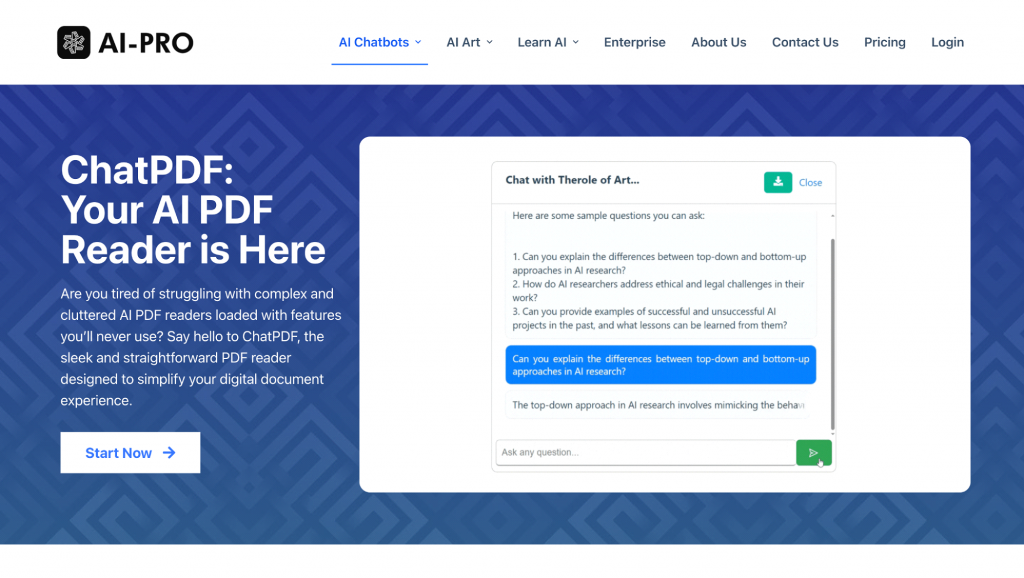Artificial intelligence, or AI as most know it, has generated significant buzz in the recent decade. Starting as a mere concept, it has now become close to a necessity in most, if not all, aspects of our everyday lives, encompassing both personal and professional. For the purposes of this article, we will focus on the latter, specifically AI in business, and delve into the different tools that can help you achieve your professional goals and aspirations.
In the past few years, AI has been branded a game-changer, revolutionizing industries all over the glove. It has been proven more than useful in enhancing operational efficiency, providing deep customer insights, and boosting other assets of businesses. Just think of how we are now able to offer round-the-clock customer service, personalized sales and marketing st, and data-driven decision making. All these and more have only been possible thanks to AI and AI tools for business.

So, whether you are running a start-up, a growing enterprise, or a large corporation, there’s no question that the integration of AI can transform how you operate and compete in the market. However, we know that the concept can be daunting, especially if you’re new to the field. What exactly are these AI tools? How do they work? And most importantly, how can they benefit your business?
In this comprehensive guide, we’ll answer all those questions to demystify this cutting-edge technology, exploring the various tools available and their practical applications. We’ll also discuss the benefits and challenges of AI implementation and provide insights on how to choose the right AI tools for your unique needs. Our goal is to give you a clear understanding of how AI can drive your business forward, helping you to not only stay competitive but to lead in your industry.
Understanding AI Tools and the Different Categories
AI tools have rapidly evolved from theoretical concepts to practical applications that significantly impact various industries. They constitute a wide range of software and technologies that leverage machine learning (ML), natural language processing (NLP), computer vision, and other AI fields to simulate human intelligence processes and perform tasks that typically require human cognition.
These tools are transforming businesses by providing innovative solutions that streamline processes, enhance decision-making, and drive growth. To effectively use them in your professional endeavors, it’s essential to understand the different types of tools available at your disposal.
Here, we explore some of the key categories of AI tools and their applications in more detail:
- Chatbots
Chatbots are AI-powered tools designed to simulate conversations with users through text or voice interactions. They use NLP to understand and respond to user inputs in real-time and provide instant support and information. These tools can be customized to handle specific tasks and are available 24/7, making them highly efficient for customer engagement.
- Virtual Assistants
Virtual assistants are more advanced AI tools that can perform a variety of tasks or services based on voice commands or text inputs. Unlike basic chatbots, they are designed to understand context, manage more complex interactions, and learn from user preferences. When integrated with various business applications and systems, they provide a seamless user experience.
- Predictive Analytics Tools
Predictive analytics tools utilize AI algorithms to analyze historical data and predict future trends, behaviors, or events. By identifying patterns and correlations within large datasets, these tools enable businesses to make informed decisions and anticipate changes in the market.

- Customer Relationship Management (CRM) Systems
AI-enhanced CRM systems incorporate AI capabilities to provide deeper insights into customer interactions and improve relationship management. They analyze customer data to identify patterns, predict customer needs, and automate routine tasks, leading to more personalized and efficient customer service.
- Robotic Process Automation (RPA)
RPA tools automate repetitive, rule-based tasks by mimicking human actions within digital systems. These tools are designed to perform tasks consistently and accurately without human intervention, significantly reducing manual effort and operational costs while increasing productivity.
- Natural Language Processing (NLP) Tools
NLP tools enable computers to understand, interpret, and respond to human language. They are essential for analyzing text data, extracting meaningful information, and facilitating human-computer interactions. It’s important to note that these technologies are still continuously evolving, so they only become more accurate and versatile in handling various languages and dialects.
- Image and Video Analysis Tools
Image and video analysis tools use AI to analyze and interpret any kind of visual data. They can detect objects, recognize faces, and identify patterns within images and videos, providing valuable insights and automating visual inspection processes. They are particularly useful in industries where visual data plays a critical role.
- AI-Powered Analytics Platforms
AI-powered analytics platforms use advanced algorithms to analyze large datasets, uncovering insights and patterns that might be missed by traditional analytics methods. These platforms provide businesses with actionable intelligence to drive strategic decisions and optimize operations.
By understanding these categories and their respective applications, you can better identify the AI tools that align with your specific needs and objectives. This knowledge will empower you to make informed decisions and harness the full potential of AI to achieve your goals.
8 Benefits of Using AI Tools for Business
Before we go into our recommendations on the top AI tools for business, let’s first go over exactly how using them can help your business:
- Enhanced Decision-Making – Analyze vast amounts of data to provide actionable insights and enable you to make informed, data-driven decisions and anticipate market trends with precision and agility.
- Increased Efficiency and Productivity – Automate routine and repetitive tasks to free up human resources for strategic activities, essentially reducing manual workload, achieving higher productivity, and allocating resources more effectively.
- Improved Customer Experience – Offer personalized and timely customer interactions, providing 24/7 support, tailored recommendations, and proactive assistance, which leads to higher customer satisfaction, loyalty, and retention rates.
- Cost Savings – Reduce operational costs through automation, minimizing labor expenses, errors, and downtime. Additionally, prevent costly equipment failures, optimizing resource allocation and budget utilization.
- Enhanced Data Analysis – Process and analyze large datasets quickly and accurately to uncover valuable insights and patterns and identify opportunities, mitigate risks, and adapt strategies in real-time.
- Scalability – AI tools are designed to scale seamlessly with growing business needs, ensuring consistent performance and efficiency across operations. This scalability allows you to expand operations without compromising quality or incurring significant additional costs.
- Competitive Advantage – Early adoption of AI tools provide a significant competitive edge by enhancing innovation, customer insights, and operational efficiency. With this, you can outperform competitors, anticipate market changes, and capitalize on emerging opportunities.
- Risk Management – Enhance risk management capabilities by identifying potential threats, vulnerabilities, and opportunities to proactively mitigate risks, protect assets, and maintain regulatory compliance.
The 8 Best AI Tools for Business
Leveraging the best AI tools for business can make a significant difference, so without further ado, here are some of the best ai tools for productivity, efficiency, and overall success:
- ChatGPT
ChatGPT is an AI-powered chatbot platform that uses NLP to engage with customers, answer queries, and provide assistance. It can be integrated into websites, messaging platforms, and customer service channels, offering personalized interactions and improving customer satisfaction.

- Grammarly
Grammarly is an AI-driven writing assistant that helps users improve their writing quality by checking for grammar, spelling, punctuation, and style errors. It provides real-time feedback and suggestions to enhance clarity, coherence, and professionalism in written communication, making it invaluable for business correspondence, content creation, and marketing materials.
- Google Cloud AI
Google Cloud AI offers a suite of AI tools and services that empower businesses to harness the power of machine learning and artificial intelligence. From image and speech recognition to natural language processing and predictive analytics, Google Cloud AI provides scalable solutions for a wide range of business applications, including data analysis, automation, and optimization.
- IBM Watson
IBM Watson is a cognitive computing platform that offers AI-powered tools and services for businesses across industries. From natural language understanding and sentiment analysis to predictive modeling and virtual agents, Watson enables businesses to extract insights from data, automate processes, and deliver personalized experiences to customers, driving innovation and competitive advantage.
- DALL-E
DALL-E is an AI model developed by OpenAI that generates images from textual descriptions, enabling businesses to create custom visual content efficiently. It can generate a wide range of images based on specific criteria, making it a valuable tool for content creation, marketing, and product design.
- Jasper
Jasper, one of the best AI for productivity, is an AI-powered voice assistant developed by NVIDIA that offers conversational AI capabilities for businesses. It can understand and respond to natural language queries, perform tasks, and provide information across various channels, including websites, mobile apps, and smart devices, enhancing customer interactions and streamlining operations.
- TensorFlow
TensorFlow is an open-source machine learning framework developed by Google that allows businesses to build and deploy machine learning models for various applications. With TensorFlow, businesses can develop custom AI solutions that are specifically tailored to fit their needs, including image recognition, natural language processing, and predictive analytics, tailored to their specific needs and requirements.

- ChatPDF
AI-Pro’s ChatPDF is a unique AI PDF reader that aims to make interacting with lengthy PDF files more interactive and dynamic. Users can upload PDF files and engage with the content by asking questions, gaining instant insights, and enhancing their understanding of the material. This approach offers a more engaging and efficient way to digest complex information contained within PDF documents.
The specific tools listed here are what we believe to be the best productivity AI tools. You can also explore the latest AI tools if you want more options. By incorporating these, you can unlock new opportunities, improve decision-making, and stay ahead of the competition in today’s digital economy.
8 Things to Consider When Using AI Tools for Business
In order to choose the best AI for business, it’s best to take the following into consideration prior to implementation and integration:
- Data Privacy and Security – Verify how the tool handles data storage, access, and encryption and ensure that you are complying with data privacy regulations and standards to protect sensitive information.
- Accuracy and Reliability – Evaluate the accuracy and reliability of their predictions, recommendations, and outputs by conducting thorough testing and validation.
- Ethical Use of AI – Consider the ethical implications of using AI tools, especially in sensitive areas such as decision-making, customer interactions, and data analysis, and make sure they do not perpetuate bias or discrimination.
- Integration and Compatibility – Assess compatibility with existing systems, software, and workflows within the organization and ensure seamless integration to minimize disruption and maximize efficiency.
- Scalability and Flexibility – Determine scalability and flexibility to accommodate changing business needs, growth, and evolving technologies.
- Cost and ROI – Evaluate the cost-effectiveness in relation to its potential return on investment (ROI) by considering factors such as upfront costs, ongoing maintenance, training, and expected benefits.
- User Training and Support – Provide adequate training and support for users to effectively utilize AI tools and maximize its capabilities. Remember that AI integration is all about augmentation and not replacement.
- Monitoring and Performance Evaluation – Implement monitoring and performance evaluation mechanisms to track performance, identify areas for improvement, and ensure ongoing optimization.
By carefully considering these factors when using the best AI for business, you can harness the technology’s full potential, minimizing risks and maximizing benefits.
Enhance Workplace Efficiency by Using AI Tools for Business!
In this comprehensive guide, we’ve delved into the expansive array of AI tools available to businesses today, encompassing chatbots, predictive analytics, virtual assistants, and a myriad of other cutting-edge solutions. It’s undeniable that these tools have transcended from mere innovations to becoming indispensable assets for modern businesses, fundamentally reshaping industries and revolutionizing the very essence of how we operate.

By gaining insights into their practical applications and the myriad benefits they offer, businesses can effectively harness the transformative power of AI. Through strategic implementation, organizations can not only drive innovation but also gain a substantial competitive edge in today’s dynamic marketplace.
Armed with AI-driven efficiencies, you now can navigate challenges with agility, capitalize on emerging opportunities, and propel yourself to unprecedented heights of success.




